What is better for cesspools: a review of living bacteria, antiseptics and chemistry
One of the most pressing issues that owners of private houses have to solve is the disposal of wastewater. But a properly selected means for cesspools can not only minimize the use of a sewage machine, but also provide a garden with a garden with safe quality fertilizer.
We will tell you which option will be optimal for the treatment facilities of your autonomous sewer systems. We have described in detail all the formulations used in practice, and evaluated their effectiveness. The information presented by us will help you choose the best tool.
The content of the article:
Methods for cleaning cesspools
Any cesspool needs periodic cleaning, the frequency of which is determined by the intensity of operation.
Disinfection and disposal of wastewater can be carried out in several ways:
- Mechanical cleaning. It consists in the isolation and subsequent removal from the waste mass of insoluble large particles of mineral origin. It is carried out by the method of sedimentation and filtration. The mechanical method does not allow to get rid of insoluble compounds, therefore it is used as an addition to chemical and biological cleaning technologies.
- Biological treatment. The method is based on the use of aerobic and anaerobic species of living bacteria for septic tanks and cesspools. They provide the conversion of effluents into sludge and water. The decomposition into these components occurs due to the initial oxidation with the help of anaerobic bacteria, followed by post-treatment with aerobes.
- Chemical cleaning. The methods are based on the principle of the transfer of soluble compounds using reagents into sparingly soluble compounds, after which they are precipitated.The method is used mainly for the treatment of industrial effluents and fecal matter.
Chemical and biological technologies are associated with the use of wastewater treatment products. A septic tank with one, two or three cameras is most often an option for living conditions.
In the first chamber, wastewater is fermented with the assistance of anaerobes, in the next they are final purification and preparation for withdrawal to the filtration fields or discharge into the filtration ditches.
The more chambers the septic tank has, the higher the degree of wastewater treatment. Water from three-chamber structures can flow into the soil without additional treatment. There, in natural conditions, they will be further purified, so that they do not upset the natural ecological balance.
Water from two-chamber and single-chamber septic tanks must either enter the centralized sewage network, or absorption wells. Therefore, structures with one or two chambers are used mainly for the treatment of gray effluents, and the masses from the “latrines” are diverted to cesspools, backlash or powder closets.
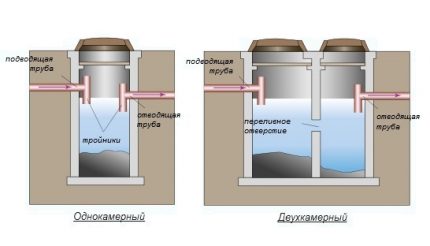
All types of treatment are associated with the formation of sediments, which should be periodically pumped and removed. The precipitate formed during chemical treatment is pumped out and taken out for disposal in central treatment facilities. Deposits resulting from biological processing, after aging in compost heaps are used as fertilizers.
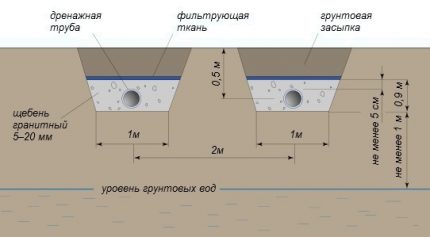
The main requirements for wastewater treatment products cesspools They consist in the possibility of minimizing the volume of fecal matter, the ability to process filtered solid inclusions, paper and cellulose.
Not the least role is played by the factor of the possibility of treating domestic wastewater, in which chlorine, acid, alkali, and phenols compounds may be present.
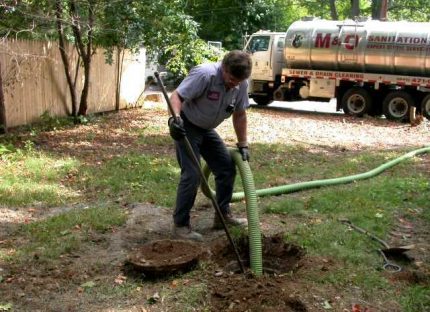
Chemical means for cleaning cesspools
Chemicals used to clean cesspools can be divided into several main subgroups:
- Formaldehydes;
- Ammonium compounds;
- Nitrate oxidizing agents;
- Bleaching powder.
Chemical compounds used for cleaning have a number of advantages and disadvantages.
The strengths of chemistry for cesspools are as follows:
- Chemicals are effective at any temperature, while the temperature range of the vital activity of living bacteria is +4 - (+ 30) degrees.
- Hardness of water and the content of antiseptic substances in it do not affect the effectiveness of cleaning with chemicals.
With regard to the possibilities of use, biological technologies are losing to chemical analogues, microorganisms useful for cesspools die in an antiseptic-containing environment and under adverse temperature conditions.
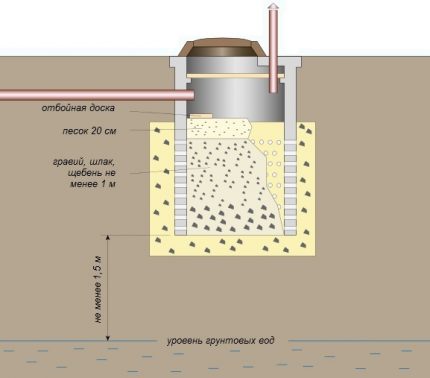
Negative aspects of the use of chemical antiseptics for cleaning cesspools:
- Corrosion on metal pipes and certain types of plastic. With prolonged contact, the structure of these materials loses its integrity and collapses.
- Vapors and gases that are inevitably released during chemical cleaning of cesspools have a negative impact on the environment. When it enters the soil, beneficial enzymes are destroyed and almost all microorganisms die.
- Chemical preparations lead to the accumulation of pathogenic bacteria in the cesspool. In this regard, even wastewater purified by chemistry cannot be used as fertilizer.
By nature, almost any chemical cleaning agent is environmentally aggressive. Therefore, you must use it as carefully as possible. chemistry for wastewater treatment, preventing decomposition products from entering soil and aquifers.
Formaldehyde for disinfection and cleaning
Recently, the use of formaldehyde was not only the cheapest, but also the most common way to disinfect a cesspool. Due to the fact that preparations based on formaldehyde, otherwise called formalin, are highly carcinogenic, they are less and less used for wastewater treatment.
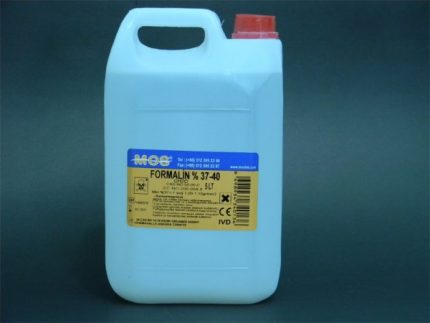
Most often, formalin is used as a disinfectant, it can not only destroy all living bacteria, but also stop the decomposition of the contents of the cesspool, which is often accompanied by the release of toxic gases.
Ammonium salt compounds
Ammonium-based preparations have high disinfectant properties. They not only significantly stimulate the decomposition of sewage, but also perfectly neutralize unpleasant odors released from the cesspool.
Ammonium salts are classified as onium compounds, which contain tetravalent nitrogen structures.Under the influence of water, ammonium preparations turn into a solution with concentrated alkali, which ensures the efficiency of decomposition of the contents of the cesspool.
Ammonium preparations work effectively in the absence of a joint sewer in the effluent, which discharges fecal matter along with gray water, household chemicals, and components of detergents.
It is known that ammonium salts have a very negative effect on human health and the environment, but the mechanism of their effect has not been fully investigated.
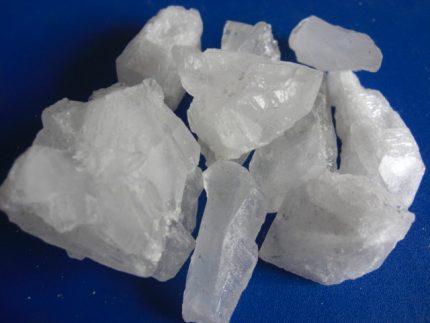
In this regard, ammonium salts are recommended to be used to neutralize sewage only with full sealing of the storage tank constructed 20 meters from the house and while preventing human contact with fumes. When emptying a cesspool disinfected with ammonium salts, it is necessary to use vacuum pumping.
The specifics of the use of nitrate oxidizing agents
In comparison with formalin and ammonium compounds, nitrate oxidizing agents are gentle preparations. When cesspools are disinfected with nitrate oxidizing agents, decomposition products can be used as fertilizers with some limitations.
Nitrate oxidizing agents perfectly cope with the decomposition of solid waste and fecal matter, neutralizing a specific odor and transforming the contents of the cesspool into a homogeneous substance. In order to obtain the safest fertilizer, nitric acids should be used as nitrate oxidizing agents.

The only disadvantages of nitric acid compounds are their high cost and aggressive effect on metals, upon contact with which nitrates are deposited on their surface. If there are steel pipes in the cesspool, they can “overgrow” due to contact with nitric acids.
Features of the use of bleach
Chlorine lime is widely used for disinfection and cleaning cesspools due to its cheapness. Like formaldehyde of bleach, high carcinogenicity is inherent. Despite the fact that it belongs to the category of disinfectants, nevertheless, it has toxicity to the human body.
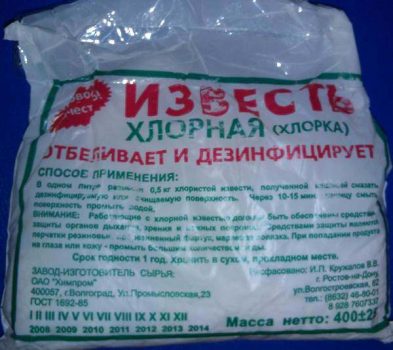
Use bleach with extreme caution, following the manufacturer's recommendations for working with a chemical substance. It should be noted that the powder should be stored in a dark place, since in bright light as a result of the decomposition of bleach, there is a loss of active chlorine.
Rules for choosing chemical cleaning agents
Before buying a drug, you need to determine the need for further use of recycled sewer and wastewater. If you want to use treated effluents as fertilizers, it is better to abandon chemicals. In extreme cases, nitrate salts that are the least harmful to the environment can be used.
Due to the fact that chemical agents are aggressive in nature to various materials, it will not be superfluous to take into account the material of the walls of the cesspool, the presence of pipelines in it. As carefully as possible, you should choose chemistry when using a fecal pump, the surface of which is most affected by chemicals.
If household chemicals or detergents get into the cesspool, they can affect the performance of chemicals.Some chemicals, when reacting with detergents and household chemicals, are partially or completely neutralized, so it will not be superfluous to study the instructions or consult for compatibility.
Biological products for a cesspool
If a cesspool is used to decompose sewage green drugs based on enzymes and living organisms, then this method of cleaning is called bacterial-enzymatic.
The following qualities are inherent in all bacterial and enzymatic preparations for wastewater treatment:
- Convert waste to a safe mass. The sludge obtained as a result of bacterial activity is a valuable fertilizer rich in organic matter and minerals.
- Safe for people, do not cause allergic reactions and skin irritations even in case of direct contact.
- Contribute to odor elimination and excessive gas formation during decomposition.
- In contact with any materials of inorganic origin do not show aggression. This fully applies to metal, plastic, plastic, concrete, brick, which are most often used for sewer and cesspool walls.
- They are able to work effectively only at a positive temperature, they are most active in the temperature range from +3 to +30 degrees. Although there are exceptions, there are bacteria-based drugs that can work well even at temperatures up to +45 degrees.
- Sensitive to household chemicals and detergents.
- They are inhibited and are able to die almost completely when combined with chemical cleaning agents - concentrated alkalis and acids, phenols, aldehydes, active chlorine. The survival of bacteria depends on the concentration of chemistry.
It should be noted that although living bacteria are effective for cesspools, they are not recommended for use in winter and cannot be combined with chemical agents.
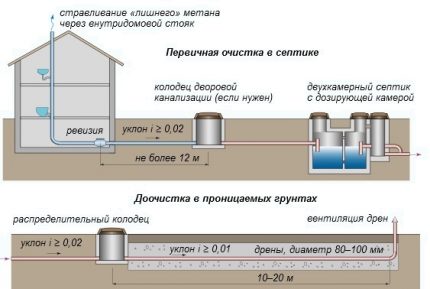
By their nature, microbes for cesspools can be classified into 2 groups:
- Aerobic They work only in conditions of unhindered supply of oxygen necessary for their life. To do this, either provide its free access in an unlimited volume, or pump gas with compressors. Aerobes are able to process almost all substances entering the cesspool and destroy harmful microbes, purify and disinfect water before it enters the filtration field or in the absorption well.
- Anaerobic. They work in closed, sealed containers, eliminating the penetration of oxygen. Such cultures serve for preliminary fermentation of effluents with the help of methane-forming microorganisms. Fermentation is carried out for 2-3 days, then the prepared mass is at the disposal of aerobes.
For the bacteria to work effectively, sharp changes in temperature must be avoided. Preference should be given to those biological preparationswho have passed adaptation to chemistry and are able to work in complete darkness.
Preparations that provide biological treatment of effluents can be produced in various forms.
The form of release is determined by the following parameters:
- Genus of bacteria used;
- Composition of the drug;
- Frequency of use;
- The convenience of use.
Most often, biologically based preparations are available in the form of granules and powders, liquid formulations and tablets. Each of the presented biological agents has its own peculiarities of breeding and various efficiency of waste decomposition.
Powder Formulation Options
Available in the form of a dry powder, the composition of which contains a group of microorganisms and enzymes. The drug is convenient for transportation, its packaging is carried out in containers and containers of various sizes.
Powder formulations are distinguished by such characteristic features:
- The drug consists of saprophytic anaerobic bacteria grown in vitro.
- The composition can be implemented both in the form of a powder, and can be a granular mixture.
- Bacteria in the form of granules or powder are in suspended animation and require activation.
Most often, bacteria are activated by adding warm water in the proportions specified by the manufacturer. Sometimes, the activation of bacteria may require the addition of sweets or organics. A sign of awakening and the beginning of the vital activity of bacteria is the release of carbon dioxide, which is manifested by the release of bubbles on the surface.
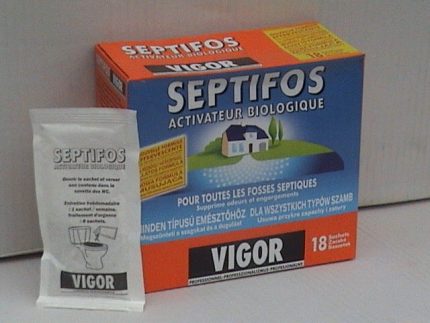
The instruction should not be neglected, since incorrectly awakened bacteria will not bring any positive effect after entering the cesspool.
Liquid concentrated products
Liquid biological preparations are characterized by a high concentration of microorganisms. They contain a complex of anaerobic bacteria that effectively decompose virtually any organic impurities. Under the influence of household waste decompose into water and carbon dioxide.
The main distinguishing feature of liquid products is the small amount required for a large amount of waste. Due to the high concentration of the solution, 1 liter of the drug will be enough to process 2 m3 of waste water. The recommended volume of the drug is indicated by the manufacturer.
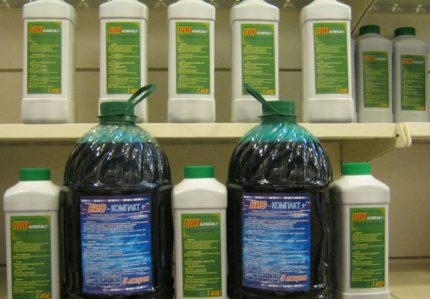
Liquid products may require dilution with warm water or directly poured into cesspool without bottom and with a bottom. In any case, the container with bacteria must be kept at room temperature and make sure that the activity of the bacteria is activated. A container with bacteria for the period of awakening should not be left under the influence of bright light.
Pills
The tablet form of biological products is considered the most convenient to use. Enough cleaning tablets for the cesspool are placed in a container with sewage, and anaerobic bacteria will begin their work. The amount of the drug is determined by the volume of the pit and is indicated in the instructions for use.
The basis of the tablet preparations are anaerobic bacteria, which work fine in the dark in the absence of oxygen. In addition to tablets, biological products can be produced in the form of cartridges with populated microorganisms or in the form of self-dissolving packages.
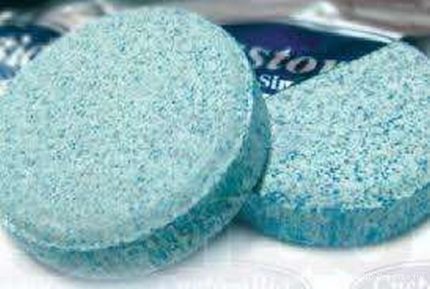
The tablets perfectly dissolve hard bottom sediments, which avoids work to deepen the cesspool. In addition, they perfectly clean wastewater from suspended particles and neutralize unpleasant odors.
When buying tablet preparations, you need to pay attention to the features of the vital activity of bacteria. This is due to the fact that there are tablets based on aerobic bacteria used in wastewater treatment plants. Such preparations are not suitable for cleaning cesspools, since oxygen is necessary for their activity.
Review of the best brands and brands
Given the fact that chemicals are increasingly having a negative impact on the environment, biological products are becoming more popular.
The most popular in the market of biological products for cleaning cesspools are:
- Bioactivator Saneks. Available in powder form, which should be infused in warm water for 20 minutes to activate bacteria. Sanex, in addition to sewage, copes with fats, starches, paper and organic fibers. The resulting water can be used for irrigation.
- Dr. Robik. It includes more than a hundred types of microorganisms, which, in addition to organics, makes it easy to deal with the decomposition of phenols, fats and detergents. A sachet of the drug is able to clear 5 m3 of waste water. If there is little water in the cesspool, then for efficient operation drug Dr. Robik need to make up for fluid deficiency.
- Bioactivator "Green pine". In addition to bacteria, the drug contains organic carriers, enzymes, as well as coniferous flavoring. In addition to excrement, it copes with fats, minimizes the reproduction of generations of flies. The drug provides the processing of the contents of the pit to a state of fertilizer.
- Micropan. Available in the form of powder and liquid, there is also a tablet form. Optimally matched bacteria and enzymes handle the processing of excrement and paper into a safe mass.
- Bio septum. It is used as a universal tool for cesspools. It helps to thin the bottom sediments, cope with fats, excrement, neutralizes surfactants. The bacteria of the drug are strongly suppressed by chlorine-containing substances.
All biological preparations perfectly cope with organic waste, and their effectiveness is determined by the environment that is present in the cesspool. There are simply no special criteria for choosing organic drugs; for their effective work, you must strictly adhere to the manufacturer's recommendations.
With device and technology cesspool construction at the summer cottage will introduce our proposed article.
Conclusions and useful video on the topic
Video # 1. Cleaning the cesspool with nitrogen fertilizers:
Video # 2. Tips for using bacteria to neutralize bad odors and decompose sewage pit sewage:
Video # 3. Recommendations for working with biological products Dr. Robik:
By choosing a chemical disinfection method, you endanger your health and the environment. Even a one-time use of chemistry will forever exclude the possibility of using microorganisms.
Although microbes and bacteria for processing cesspools have limitations, it is still better to give preference to them as an effective and safe means of cleaning.
You want to tell, what structure for processing a cesspool you had to use? Please write comments in the block below. Ask questions, share experiences, tips and photos.

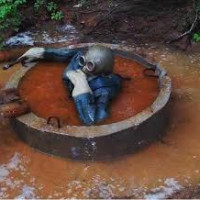 Cleaning the cesspools: a review of best practices + eliminating siltation
Cleaning the cesspools: a review of best practices + eliminating siltation 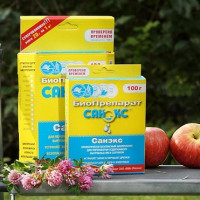 An overview of the Sanex product line for cesspools: reviews and instructions for use
An overview of the Sanex product line for cesspools: reviews and instructions for use 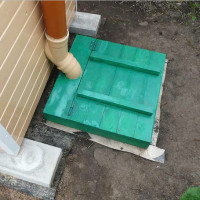 How a cesspool is constructed in a private house: a review of structures + rules for their arrangement
How a cesspool is constructed in a private house: a review of structures + rules for their arrangement  How a cesspool is constructed without a bottom: schemes and arrangement rules
How a cesspool is constructed without a bottom: schemes and arrangement rules 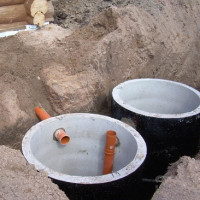 How a cesspool with overflow is arranged: schemes and construction technology
How a cesspool with overflow is arranged: schemes and construction technology 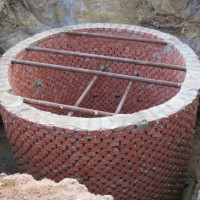 Do-it-yourself cesspool: analysis of popular options for arranging
Do-it-yourself cesspool: analysis of popular options for arranging  How much does it cost to connect gas to a private house: the price of organizing gas supply
How much does it cost to connect gas to a private house: the price of organizing gas supply  The best washing machines with dryer: model rating and customer tips
The best washing machines with dryer: model rating and customer tips  What is the color temperature of light and the nuances of choosing the temperature of the lamps to suit your needs
What is the color temperature of light and the nuances of choosing the temperature of the lamps to suit your needs  Replacement of a geyser in an apartment: replacement paperwork + basic norms and requirements
Replacement of a geyser in an apartment: replacement paperwork + basic norms and requirements
I read here that the Devon-N preparation is not suitable, or rather, it has a bad effect on metal pipes. Just because of my allergic diseases, oddly enough, I only tolerate nitric acids. But cesspools need to be cleaned. And it's easier for me to adapt to this drug. Tell me, what pipes then lead to the cesspool, so that nitric acids do not harm them?
Well, you can put plastic pipes.Although the manufacturer indicates on the Devon-N packaging that the product does not damage plastic, rubber, does not cause metal oxidation. So I’m not sure that the material is written correctly about the harm to the metal.
Just equipped a "country" toilet and there was a choice. It is clear that they will have to call the scavengers periodically for anyone, but in order to reduce the number of their calls, they have not decided what to prefer: chemistry or bacteria. Will bacteria do their job normally in winter? Also a question. Pour everything in a row, and then harm the environment - a dubious undertaking. The question still remains open, although, in my personal opinion, bacteria are much more “humane” for nature.
It depends on where you live and what your winters are. Bacteria work at + 4-5 degrees, if the temperature drops below, then they fall into hibernation. In spring, when the temperature stabilizes above 5, you need to fall asleep with the “starting” biological product and they will work with renewed vigor.